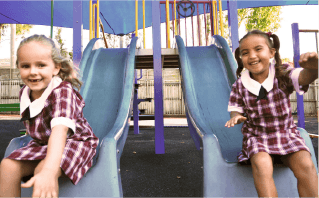
If you’re the parent, chances are you’ve already had to deal with at least one instance of your children asserting themselves in an overly aggressive or defiant manner. Or the opposite, being passive and not standing up for themselves. It can be tough to know how to handle these situations. Luckily, there are more assertive communication styles for kids that can help your child express themselves in a more assertive manner. Read on for tips on using these styles effectively and creating a more positive environment for all.
What is Assertiveness?
Assertiveness is a key communication skill that children can learn at an early age. By definition, assertiveness is the quality of being self-assured and confident without being aggressive. When communicating assertively, children can express their needs and wants in a clear and direct way, without resorting to bullying or intimidation tactics. Assertive communication also involves listening to others and respecting their opinions, even if not agreeing with them.
Assertiveness is a vital skill that all children should learn. By teaching assertiveness early on, you can set your child up for success in all areas of their life.
The Benefits of Being Assertive
Teaching assertiveness to kids can have many benefits. For one, it can help them to build healthier relationships with others. Assertive children know how to express their needs and wants without putting down others or making them feel bad. As a result, they tend to be more successful in both personal and professional relationships. Additionally, assertiveness can help children to stand up for themselves when necessary. In a bullying situation, for example, an assertive child knows how to speak up and defend themselves without getting into a physical fight. Finally, assertiveness is a key success skill that will benefit children throughout their lives. From getting better grades in school to landing a dream job, assertiveness can help kids to achieve their goals.
There are many benefits to assertiveness, both in the short-term and long-term. In the moment, assertiveness can help kids to resolve conflicts without resorting to violence or other negative behaviours.
Assertiveness is crucial for kids, as it builds their confidence, self-esteem and resilience. It also acts as a guard against harmful behaviours such as bullying.
Assertive kids are more likely to be able to:
- identify with their feelings;
- speak up for themselves and others;
- avoid and respond to bullying;
- disagree respectfully;
- negotiate with others;
- say “no” without feeling guilty;
- build stronger relationships;
- build confidence and self-esteem;
- feel in control.
Communication Styles
There are three main communication styles: assertive, aggressive, and passive.
Assertive Communication
Assertive communication is direct and honest, without being aggressive or disrespectful. This communication style is calm and respectful of others while asserting a personal opinion or belief.
Passive Communication
Passive communicators tend to avoid conflict and may have difficulty expressing their needs. This communication style is typically non-confrontational, and passive communicators may have difficulty assertively expressing their wants or needs.
Communicating frequently in a passive manner can lower confidence and self-image. This leads to a feeling of lesser autonomy in the world and a sense of helplessness.
Aggressive Communication
Aggressive communication is characterised by intimidation, put-downs and threats. This communication style is generally disrespectful and is more likely to lead to conflict than assertive or passive communication.
Communicating frequently in an aggressive manner may negatively impact social connection. This leads to lesser quality friendships, increased isolation and loss of respect.
Are we born Passive, Aggressive or Assertive?
It’s commonly thought that individuals are born either passive, aggressive or assertive. While there is a biological element, assertiveness can most definitely be taught. Research supports the notion that action changes behaviour faster than behaviour changes action. Therefore, if our kids learn to act with assertiveness, they will become more assertive.
How to Teach Assertiveness to Children?
Teaching kids’ assertiveness can be approached in two stages. Firstly, teaching them to speak up for themselves. Secondly, how to do it respectfully.
One of the best ways to teach assertiveness is to model it yourself. When you are assertive with your words and actions, your kids will take notice and learn from your example.
In order to help kids become more assertive, it’s important that they learn about the different communication styles. The next time your child is in a disagreement with someone, encourage them to use the communication style that will be most effective.
You can also print out the Superpower Kids Communication Styles printable and have them practice figuring out which style to use. We hope this information helps your family communicate better and strengthens relationships.
Related Articles
How to Respond to Cyberbullying
Why is Friendship So Complicated?




